Introduction
Multiprocessors or parallel systems are becoming increasingly important in today’s world. Earlier, most computer systems worked on single-processor systems, meaning they had only one processor. Multiprocessor system creates into play to give numerous results at the concurrent time, which will grandly abridge the whole process”.
Luigi Federico Menabrea wrote the idea of multiprocessing’s first time in 1842 about Charles Babbage’s analytical engine (as translated by Ada Lovelace): Multiprocessing is the utilization of two or even more central processing units within a sole computer system.
What is a Multiprocessing Operating System?

Multiprocessor operating system is a unique operating system that is utilized to boost the performance of numerous CPUs as well as a single computer system.
Nowadays, the computer industry is moving from uni-processors to various kinds of multiprocessors for both desktop and embedded systems. Instead of traditional Single Multiprocessing systems, many manufacturers are now coming up with chip multiprocessors or simultaneous multi-threaded CPUs, allowing more efficient chip area use. The multiprocessor system requires support from operating systems and applications to take advantage of the hardware. By using a multiprocessor, we can improve performance, computing speeds, and cost-effectiveness and provide enhanced reliability and availability.
Types of Multiprocessing Operating Systems
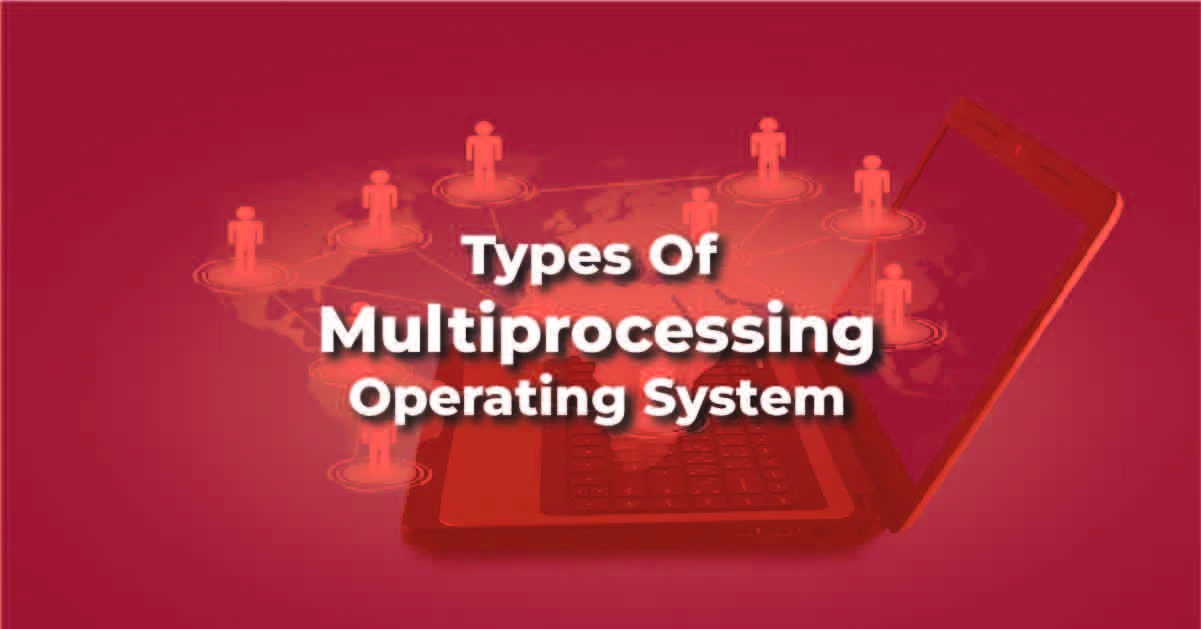
Symmetrical multiprocessing operating system
Symmetric multiprocessors combine two or more similar processors sharing one main memory. The multiple processors may be isolated chips or multiple cores on the same chip.
The symmetric multiprocessor (SMP) is the most famous form of multiprocessor system available, ranging from low-cost file servers with only two processors to high-performance graphics systems, such as Silicon Graphics’s Power Challenge, that contain up to 36 processors.
Asymmetrical multiprocessing operating system
Asymmetric multiprocessor systems are a section along with symmetric multiprocessor systems. Multiprocessor systems have multiple processors working laterally, or we can say coextensive, that share the computer clock, memory, bus, peripheral devices, etc. The processors in asymmetric multiprocessing might have a bondslave relationship, i.e., a processor may assign processes to other processors.
Shared memory Multiprocessor
In shared-memory multiprocessors, numerous processors access one or numerous shared memory modules. The processors may be physically joined to the memory modules in many ways, but logically every processor is connected to every memory module.
Uniform Memory Access Multiprocessor (UMA)
UMA stands for Uniform memory access. It is a parted memory architecture used in parallel computers. All the processors in the Uniform memory access model split the physical memory uniformly. In Uniform memory access architecture, access times to a memory location are self-governed by which processor generates the request or which memory chip includes the shared data.
Distributed memory Multiprocessor
The system includes multiple computers, known as nodes, related by a message-passing network. A Distributed-Memory Multiprocessor is built by joining nodes, consisting of uniprocessors or shared memory multiprocessors (SMPs), via a network called an Interconnection Network (IN) or Switch. Each node is an independent computer, including a processor, local memory, and sometimes connected disks or I/O peripherals.
NUMA Multiprocessor
Non-uniform memory access is a process of configuring a bunch of microprocessors in a multiprocessing system so they can apportion memory locally. The idea is to improve the system’s performance and allow it to expand as processing needs evolve. In a NUMA setup, the individual processors in a computing system share local memory and can work together. Data can flow smoothly and quickly since it goes through intermediate memory instead of the main bus.
Requirement of Multiprocessing Operating System

Motherboard Support:
A motherboard is the most significant part of a computer system. It holds together many of the crucial components of a computer, containing the central processing unit, memory, and adapters for output and input devices. This means additional sockets or slots for the extra chips and a chipset capable of handling the multiprocessing arrangement.
Processor Support:
A processor is a consolidated electronic circuit that performs the calculations that run a computer. Processors are those who are suitable for being used in a multiprocessing system.
MULTIPROCESSING OPERATING SYSTEMS VS SINGLE-PROCESSOR OPERATING SYSTEMS
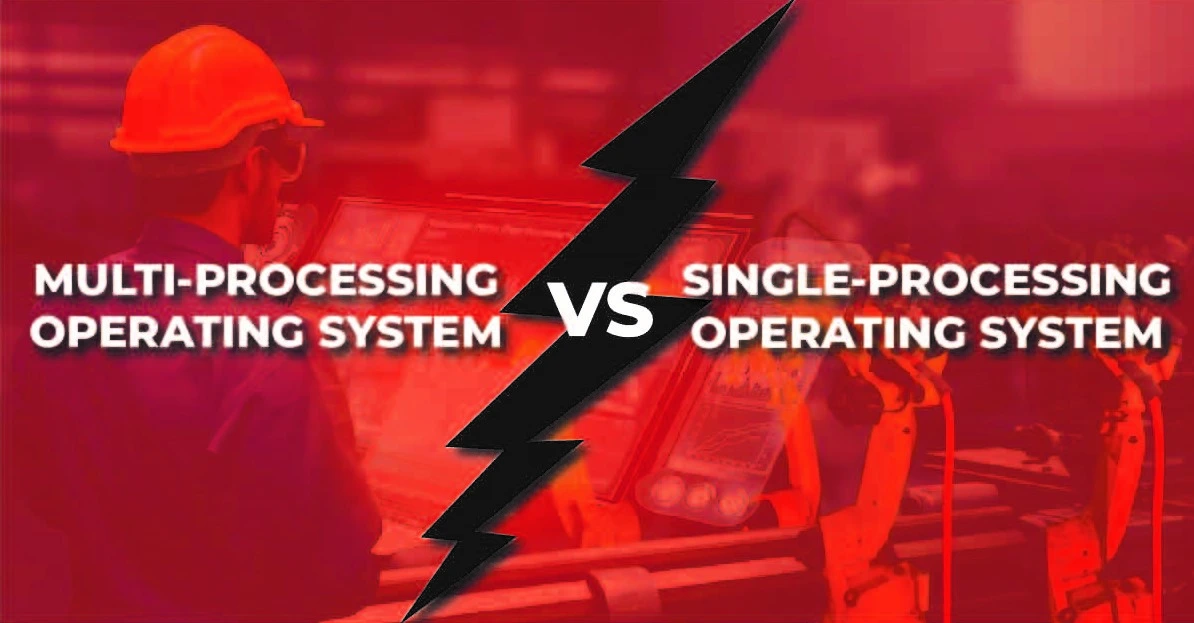
Single processor system
- A single-processor system consists of only one processor.
- Only one process can be performed at a time. Then the process is chosen from the ready queue even if several applications need to be executed since the system consists of a single processor. Only one procedure can be performed at a time.
- Single processor systems expense is more because every processor requires individual resources here.
- It can be easily designed as a Single Processor System.
Multiprocessor system
- Multiprocessors consist of two or more processors.
- Multiple applications can be executed simultaneously. There can be two main types of symmetric or asymmetric multiprocessing which help many processors to perform different tasks.
- Multiprocessor systems expenses are less than equivalent multiple single processor systems as they utilize the same resources on a sharing basis.
- It is hard to design Multi-Processor Systems.
Working of Multiprocessing Operating System

-
Processor support
-
False sharing
Careless use of shared memory structures with OpenMP applications can result in poor performance and limited scalability. Multiple processors updating adjacent shared data in memory can result in excessive traffic on the multiprocessor interconnect and, in effect, cause serialization of computations.
Below are the three following conditions when occurring false sharing
degrades the performance of the system;
- Multiple processors modify shared data.
- Multiple processors update data within the same cache line.
- This updating frequently occurs (for example, in a tight loop).
-
Shared data
When multiple processors access the corresponding data concurrently, there may be a possibility of data inconsistency, so to safeguard this, we have to use some protocols or a locking scheme.
Difference between Multi-Processing Operating System and Multi-Programming Operating System
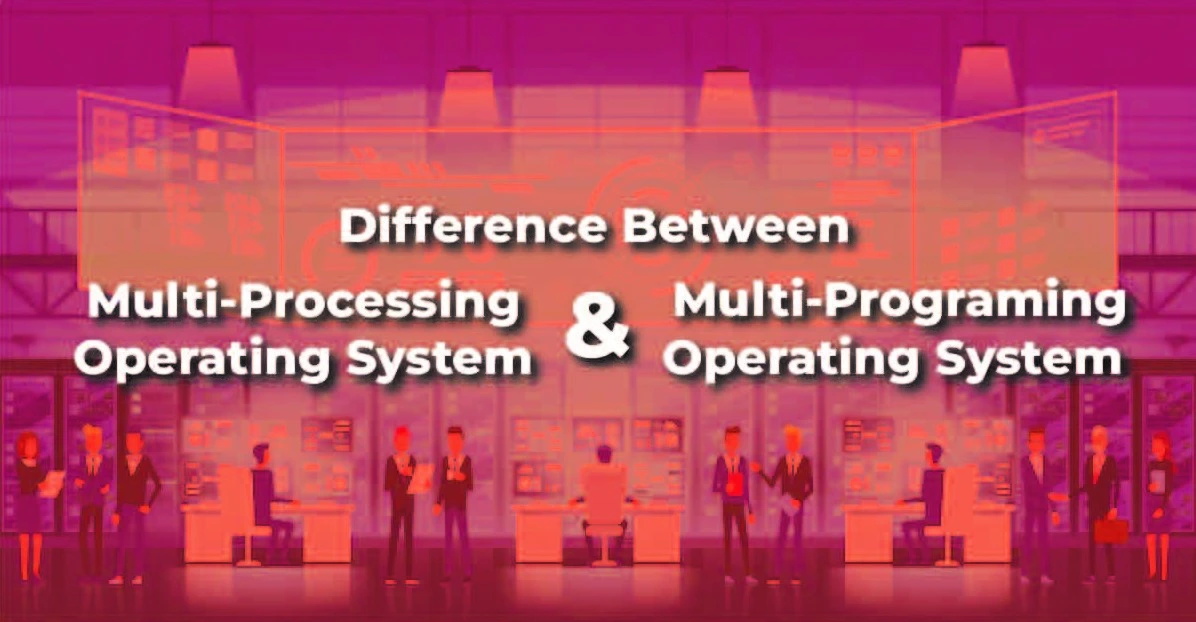
- The concurrent residency of more than a single program in the main memory is called multiprogramming. Meanwhile, The availability of more than a single processor per system, which can execute various sets of instructions in parallel, is called multiprocessing.
- Only One CPU is used in Multiprogramming Operating System, while in Multiprocessing Operating System, More than one can be used.
- More time is taken to process the jobs in Multiprogramming Operating System, while on the Multiprocessing Operating System opposite, Less time is taken for job processing.
- Multiprogramming Operating System executes one process at a time, and in Multiprocessing Operating System can execute more than one process at a time.
- Multiprogramming Operating System is economical and has less efficiency, while Multiprocessing Operating System is less economical and has maximum efficiency.
Applications of Multiprocessing Operating Systems

- As a uniprocessor, like single instruction, single data stream (SISD).
- As a multiprocessor, like single instruction, a multiple data stream (SIMD) is frequently used for vector or parallel processing.
- Multiple series of instructions in a single point of view, like multiple instructions, a single data stream (MISD), is utilized for describing hyper-threading or pipelined processors.
- Inside a single system for executing multiple, individual series of instructions in various perspectives, such as various instructions and multiple data streams (MIMD).
Characteristics of Multiprocessor Operating System
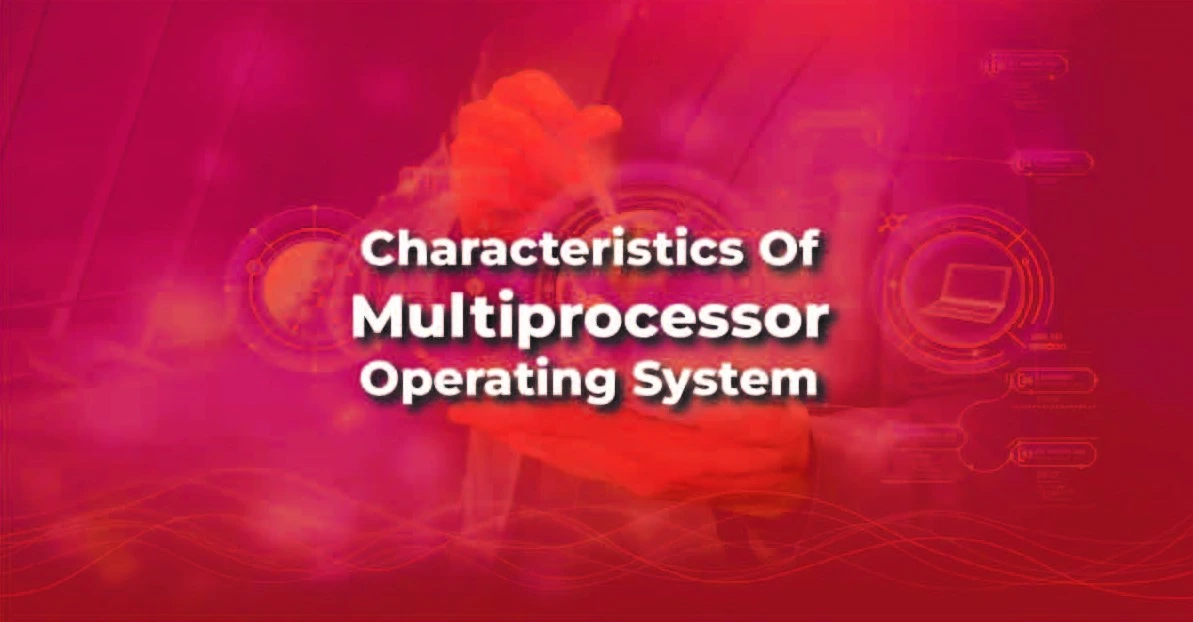
The following are the essential characteristics of multiprocessors.
Parallel Processing:
This demands the usage of many processors at a concurrent time. These processors are planned to do a specific task using a single architecture. Processors are generally the same, and they operate together to generate the effect that the consumers are the only individuals utilizing the system. In reality, several others are trying to utilize the system in the first place.
Distributed Computing:
Likewise, to parallel computing, this distributed processing needs a processor network. Each processor in this network can have a mind as a standalone computer capable of solving problems. These processors are distinct, and each one is typically allocated to a separate job.
Supercomputing:
This contains using the fastest machines to address large, computationally challenging issues. Earlier supercomputers were used as vector computers, but nowadays, most people use parallel or vector computing.
Pipelining:
Furthermore, supercomputing is a method that splits a task into several subtasks that must be completed in a stated order. The functional units aid individual subtasks. The devices are connected sequentially, and they all work at a concurrent time.
Systolic:
Pipelining is alike, but the units are not organized linearly. Systolic steps are often numerous and tiny and are conducted in lockstep. This is more commonly used in specialized hardware like image or signal processors.
Examples of Multiprocessor Operating Systems

Multiprocessing is a computer’s capability to simultaneously process more than a single task. A multiprocessing operating system is good at running many programs simultaneously, and the newest network operating systems (NOSs) support multiprocessing. All the significant operating systems nowadays support multiprocessor CPUs, including Windows NT, 2000, XP, Unix, Intel Nehalem – Westmere, Beckton, and Sandy Bridge.
AMD Opteron – K10 (Magny Cours, Barcelona); Bulldozer
A15 MPCore, ARM Cortex A9
Examples of Symmetric Multiprocessor – Windows NT, Digital UNIX, OS/2 & Linux.
Examples of Asymmetric Multiprocessor – SunOS Version 4, IOS
Advantages of Multiprocessor Operating system
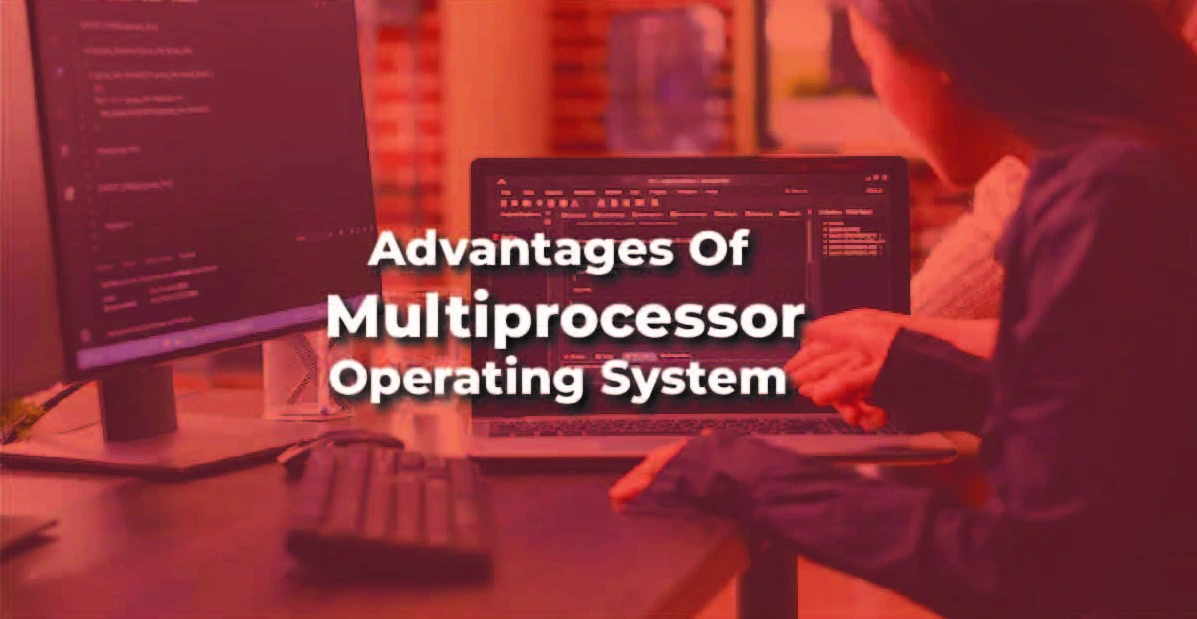
It is likely to enhance execution speed if you use a multiprocessor system. More tasks can be finished in less time this way. In addition to these facts, you may desire to think about shifting to a multiprocessor system:
Reliable
Multiple processors enhance the dependability of a system, which is an unsurprising benefit.
Great Trustability
If due, for any reason, any one processor gets declined, then do not worry because the whole system will work rightly. For example – if a multiprocessor has six processors and any one processor does not execute properly, at this stage rest of the processors have duties for conducting this system.
Upgraded Throughput
Increment throughout the system. The entire system is lightened if couples of processors work with cooperation.
Inexpensive System
Multiprocessor systems are inexpensive as compared to single processor systems in long duration because this system is competent to utilize all input/output devices, power supply systems, and data storage centers. In a multiprocessor, all peripheral terminals do not need to connect independently with each processor.
Parallel Processing
Multiprocessor operating systems are highly efficient due to parallel processing. In this system, a single job is separated into various same small jobs and executed in a Parallel nature.
Disadvantages of Multiprocessor Operating System
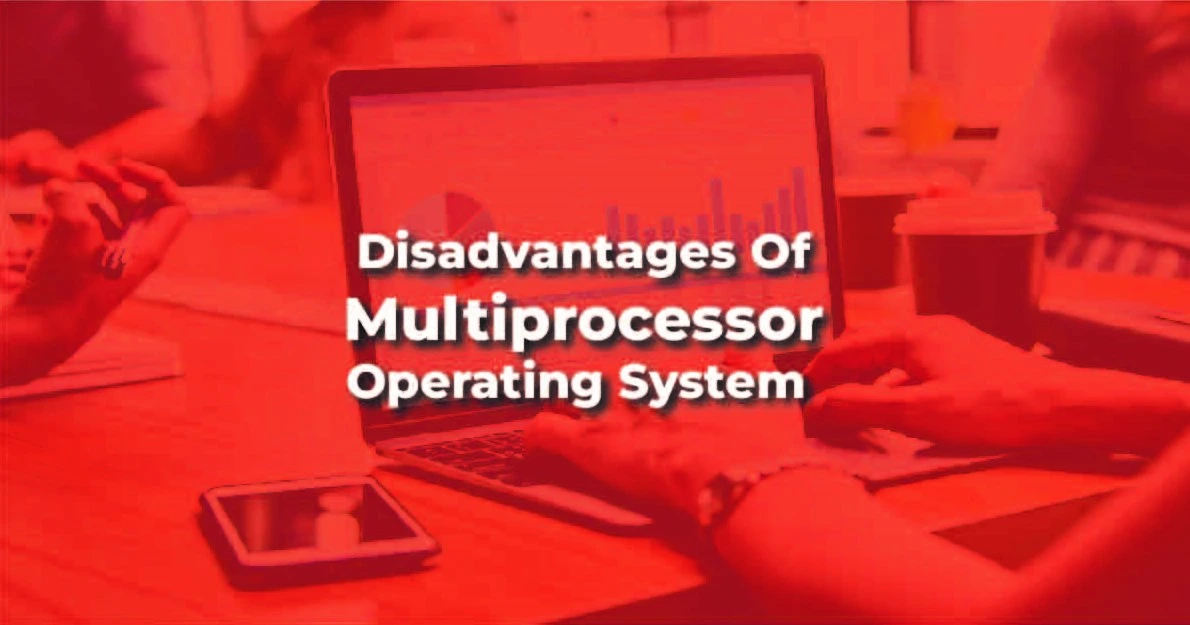
- Communication: As multiple processors correspond with each other, the operating system implementation is complicated.
- More memory needed: Because many multiprocessors work with each other, each individual processor needs memory space.
- Deadlock: If any processor is already using the I/O device, then other processors cannot use the same I/O device, which generates deadlock.
- Performance: If any processor breaks to work, then the work is bifurcated into other processors. The poor effect will be that work will be finished in high time, and the achievement of the system is impacted.
- Expensive: These types of systems are costly to buy.
Conclusion
Multiprocessing operating systems are also known as strongly connected systems. Multiprocessors benefit from higher throughput, increased dependability, and economies of scale. These processors are used when processing a large amount of data at high speed.
For more tech-related blogs, please visit DataTrained Blogs.
Do visit our Youtube Channel for more tech-related videos and blogs.
FAQs (Frequently asked questions)
What is a multiprocessing operating system, for example?
Multiprocessing alludes to a computer system’s ability to support more than one process (program) simultaneously. Multiprocessing operating systems allow several programs to run simultaneously.
Multiprocessing operating systems are much more complex than single-process systems because the operating system must reasonably allocate resources to competing processes.
A multiprocessing operating system can run many programs in that UNIX is one of the most commonly used examples of a multiprocessing operating system. Still, many others exist, including OS/2 for high-end PCs.
What are multiprocessing and its types?
There are many types of multiprocessing operating systems:
- Loosely coupled multiprocessing operating system.
- Tightly coupled multiprocessing operating system.
- Homogeneous multiprocessing operating system.
- Heterogeneous multiprocessing operating system.
- Shared memory multiprocessing operating system.
- Distributed memory multiprocessing operating system.
- Uniform memory access (UMA) system.
- Cc–NUMA system.
What are a multiprocessing operating system and its advantages?
Multiprocessing is a word used in operating systems to define the execution of numerous concurrent processes. Each runs on various cores or CPUs rather than a single process at any decided moment.
The advantages of the multiprocessing operating system are:
Increased Throughput − We can complete further work quickly by growing the number of processors.
Cost Saving − Multiprocessor system thus saves money as analogized to multiple single systems.
Increased reliability -Processing tasks can be distributed among various processors. This grows reliability as if one processor is broken down, and the task can be given to other processors for completion.
What is a multiprocessing operating system, and what are its disadvantages?
Multiprocessor operating system permits multiple processors, and these processors are connected with physical memory, computer buses, clocks, and peripheral devices.
There are a list of several disadvantages of the Multiprocessing operating system such as:-
- Multiprocessor has a complicated nature in both forms, such as H/W and S/W.
- It is more expensive due to its significant architecture.
- Multiprocessor operating systems have a daunting task for scheduling processes due to their shareable nature.
- Multiprocessor systems need large memory due to sharing their memory with other resources.
- Its speed can degrade due to failing any one processor.
What are the 2 types of multiprocessing OS?
Mainly there are 2 types of multiprocessing operating systems which are;-
1) Asymmetric multiprocessing system
In this system, one processor acts as a master, and the other acts as a slave. Master processor assigns ready-state processes to the slave processors. In an asymmetric system, a scheduler is made by the master processor, which gives processes to other processors. This system is simple to maintain. The operating system is placed in the master, and user space is set in slave processors.
2) Symmetric multiprocessing system
In an asymmetric system, master-slave relationships do not exist, and all the processors have their process planners. All the processors include the operating system and user space. There is a global queue in which all the ready-state processes are placed. Every processor gets processes from the global queue. There is a chance that two processors get the same process at a time. To solve this problem, locking is used in the global queue. The throughput of the operating system increases in a symmetric system as more processes get executed at a time.
What is a multiprocessing function?
Each processor in such a system is allocated to perform a particular function; it can execute its task, pass the instruction fixed on to the upcoming processor, and start working on a new set of directions. For example, different processors may be utilized to manage memory storage, data communications, or arithmetic functions. Or a larger primary processor might use smaller secondary processors to conduct miscellaneous housekeeping duties, such as memory management.
Why do we use multiprocessing?
Multiprocessing is a computer system with more than two central processing units (CPUs) sharing full access to a standard RAM. The main aim of using a multiprocessor is to boost the system’s execution speed, with other objectives being fault tolerance and application matching.
Multiprocessing is used when you want multiple things to be performed at any given period. Suppose your application requires connecting to 6 databases and executing a complex matrix transformation on each dataset.
What are the main characteristics of a multiprocessing system?
There are the significant characteristics of multiprocessors as follows −
- Parallel Computing − This includes the simultaneous application of more than one processor. These processors are generated using a single architecture to perform a common task.
- Distributed Computing − This involves the use of a network of processors. Each processor in this network can be discussed as a computer in its own exclusive right and have the ability to solve a problem.
- Supercomputing − In the past, supercomputing machines were vector computers, but at present, parallel or vector computing is used by most people.
- Pipelining is a process wherein a particular task is divided into various subtasks that must be performed in a series.
- Vector Computing involves using vector processors, wherein operations like ‘multiplication’ are divided into multiple steps and are then applicable to a stream of operands (“vectors”).
- Systolic − This is similar to pipelining, but units are not fixed linearly.
What is the difference between multitasking and multiprocessing OS?
Multitasking operating system
- The simultaneous implementation of more than one task is called multitasking.
- Only one CPU is required.
- Only one job is performed at a time.
- It is classified into two: Single user multitasking and multiple-user multitasking.
- Multitasking’s efficiency is moderate
Multiprocessing operating system
- In multiprocessing, we use more than one processor, which executes several sets of instructions in parallel.
- More than one CPU is required.
- More than one job is performed at a time.
- It is classified into two: Symmetric multiprocessing and asymmetric multiprocessing.
- Multiprocessing’s efficiency is maximum.
Is multiprocessing faster than multithreading?
Multithreading is a technique in which a process develops more than one thread to do various tasks simultaneously, one after the other. This gives you the phantom that the threads are running in parallel, but they are running concurrently. In Python, the Global Interpreter Lock (GIL) prevents the threads from running simultaneously.













